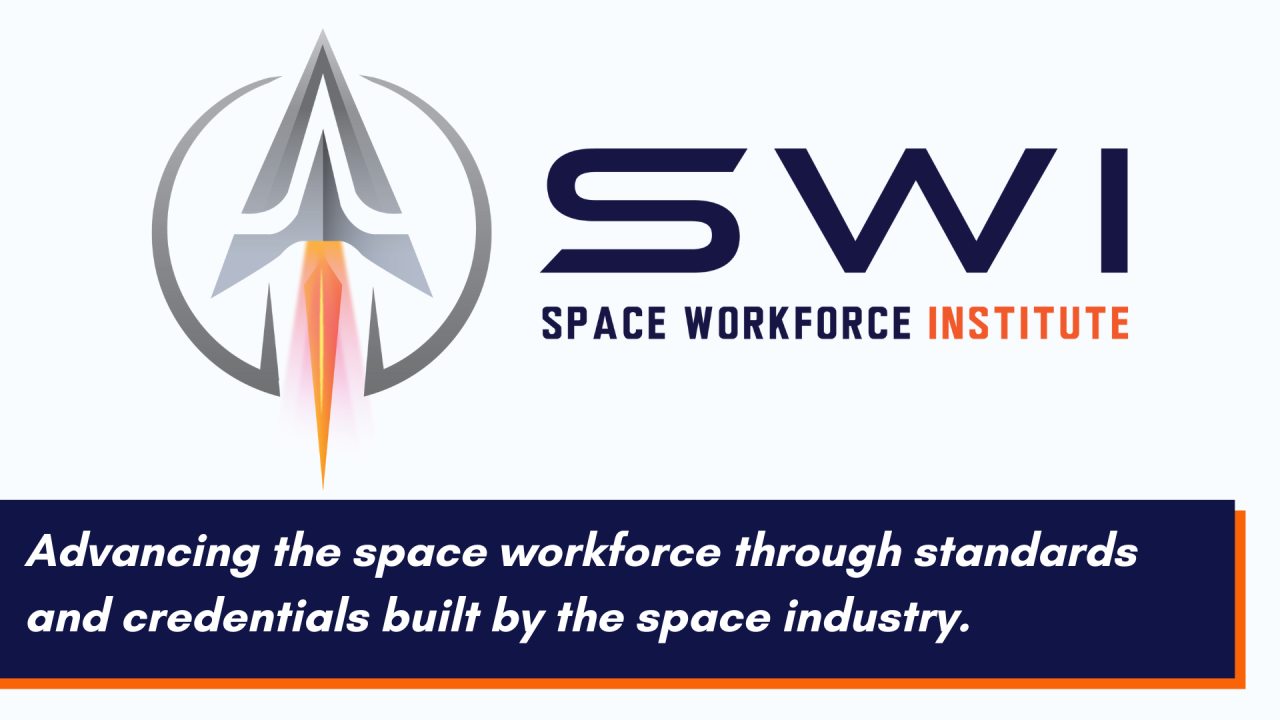In the vast expanse of space, everything depends on preparation. Whether it’s launching a rocket, building a satellite, or navigating through uncharted territory, success requires people with the right knowledge, skills, and vision to solve problems. Yet, as I’ve seen throughout my career, this critical focus on people has often been overlooked. And that’s the story of how the Space Workforce Institute came to be.
For me, the journey began with a book called Powers of Ten by Philip Morrison. As a child, I was captivated by how it zoomed out to the edge of the universe and then down to the quantum scale, showing how everything is interconnected. It was my first glimpse into the infinite possibilities of exploration, a seed that stayed with me as I pursued an undergraduate degree in astrophysics. I thought I was destined for a life of science, but after 9/11, my path shifted dramatically.
I spent two decades as a Marine officer, flying helicopters in Iraq and studying the tactical art of war. I didn’t expect space to reenter my life, but the military has a way of finding unique uses for unique people. As a Marine with an astrophysics degree, I was selected to attend the Naval Postgraduate School to earn a degree in Space Systems Operations. From there, I was assigned to the Pentagon to lead the development of the Marine Corps Space Cadre—a task that would define the next chapter of my career.
The mission was straightforward but daunting: ensure the Marine Corps could leverage space capabilities to their fullest while remaining prepared to operate when those capabilities were degraded or denied. To do this, I needed to grow a cadre of space subject matter experts and educate Marines across the Corps about the operational impacts of space.
It wasn’t an easy job. The Marines aren’t exactly overflowing with space experts, so I had to learn how to translate complex, technical concepts into practical, digestible insights for diverse audiences: Space Warfighting. Over time, our cadre grew. We built programs, developed training, and started to make real progress. But there was a recurring obstacle: the lack of high-quality, scalable, engaging training tailored to the unique challenges of space.
This problem wasn’t confined to the military. As I began working more with the commercial space industry, I saw the same issues—training that was outdated, poorly designed, and ill-equipped to meet the needs of a rapidly evolving workforce. Despite its foundational role in the modern world, the space industry lagged far behind IT and cybersecurity when it came to workforce development. I became fixated on understanding why.
The answer, I realized, came down to one critical missing piece: standards. Standards provide the foundation for a mature, sustainable workforce. They create consistency, ensure quality, improve performance, and enable people to achieve their full potential. But space, with its cross-functional nature and wide range of expertise, lacked these unifying frameworks. The result is a workforce stretched thin, struggling to keep pace with the demands of a growing industry.
As I neared the end of my military career, I knew I couldn’t walk away from this challenge. Together with Nova Space co-founder and digital learning expert Christopher Allen, I pulled together a network of space and education leaders to address the problem. Our focus was clear: invest in people. Of all the challenges in the space industry, we believed workforce development was where we could make the greatest impact.
We began by building Nova Space, the premier digital training and education provider for space professionals. But from the start, we envisioned something bigger—an organization that could unify the space industry around a shared goal: developing the standards, training, and collaboration needed to sustain the workforce of the future.
This vision led to a bold, collaborative approach. Rather than reinventing the wheel, we brought on board leaders and executive advisory committee members who have been part of building workforce standards and credentials across nearly every profession, such as healthcare, information technology, engineering, finance, and safety, including global market leaders like CompTIA, Project Management Institute, and ISC2.
The Space Workforce Institute isn’t just about training; it’s about creating a foundation for the entire industry to thrive. By uniting experts across industry, government, and academia, we’re building a framework that will grow and sustain the space workforce for years to come.
So here we are. The Space Workforce Institute is officially launched, and our mission is clear: to prepare the people who will build the future of the space economy. As space leaders, I ask you to reflect on what is most critical to achieving your goals. Technology? Funding? Manufacturing? At the end of the day, none of it matters without the people to make it happen.
The multi-trillion-dollar space economy is within reach, but only if we invest in the workforce to sustain it. I invite you to join the Space Workforce Institute—share your ideas, contribute your thought leadership, and help us build the skill-based framework for the next industrial revolution.
Semper Fidelis and Ad Astra,
Joseph “Hookah” Horvath
Co-Founder, Space Workforce Institute
